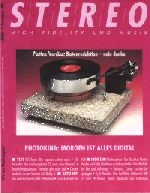 LAUFWERK PLATINE VERDIER LAUFWERK PLATINE VERDIER
von Roland Kraft -
in STEREO - High Fidelity und Musik - 11 November 1992
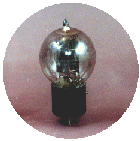
ABGESANG UND NEUANFANG
Die Ära der Schallplatte ist vorbei. Doch während die einen den
Abgesang auf denPlattenspieler anstimmen, reden andere von einem neuen Anfang -
Analog, so
heißt es, wird weiterbestehen. Werden die mächtigen Saurier vom Schlage einer
Platine Verdier also überleben ? Wir meinen: sie werden -denn Legenden sterben nicht
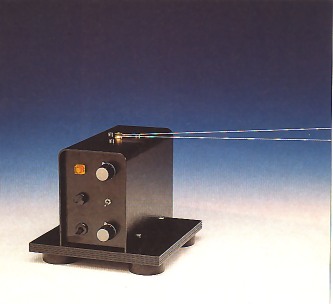 Langsam kristallisiert es sich heraus: Ein bemerkenswert großer Prozentsatz der
HiFi-Fans beharrt auf der Schallplatte. Und scheinbar unaufhaltsam entwickeln sich neue
Vertriebswege für die guten alten schwarzen Scheiben. Sei es nun der Boom im
Second-Hand-Bereich oder die Neupressungs-Aktivitäten engagierter LP-Verfechter -
der Plattenverkauf verlagert sich in den HiFi-Laden oder auf den Versandhandel, der stolze
Zuwachsraten meldet. Und die Betreiber einstiger "Plattenläden" wurden sich verwundert
die Augen reiben, wenn sie nur mitbekommen hatten, was auf der HIGH END'92 in Frankfurt los Langsam kristallisiert es sich heraus: Ein bemerkenswert großer Prozentsatz der
HiFi-Fans beharrt auf der Schallplatte. Und scheinbar unaufhaltsam entwickeln sich neue
Vertriebswege für die guten alten schwarzen Scheiben. Sei es nun der Boom im
Second-Hand-Bereich oder die Neupressungs-Aktivitäten engagierter LP-Verfechter -
der Plattenverkauf verlagert sich in den HiFi-Laden oder auf den Versandhandel, der stolze
Zuwachsraten meldet. Und die Betreiber einstiger "Plattenläden" wurden sich verwundert
die Augen reiben, wenn sie nur mitbekommen hatten, was auf der HIGH END'92 in Frankfurt los
war: Im Messezimmer eines szenebekannten Versandhändlers traten sich die LP-Fans
tagelang auf die Füsse; trotz mitunter gepfefferter Preise wurde kaltlächelnd in
Second-Hand-Raritäten und audiophile Neupressungen investiert. Daß sich etwas tut,
können auch die STEREO Tester bestätigen: "Wir lassen uns die LP nicht
miesmachen",
war der Tenor der Leser, die selbstverständlich auch in der Mehrzahl CD-Benutzer sind.
Der Highender, so scheint es, hat die Klangdiskussion CD kontra LP aufgegeben und geht jetzt
ganz pragmatisch vor: CD plus LP lautet allenthalben die Devise.
In der STEREO-Mannschaft spiegelt sich wider, was sich "draußen"
abspielt: CD- und LP-Verfechter liefern sich zwar immer noch heiße
Diskussionen, und die
Pragmatiker stehen dazwischen - doch niemand kann sich, womit wir beim Thema wären,
der Faszination einer Platine Verdier entziehen. Superlaufwerke vom Schlage einer Verdier
sind sprichwörtlicher Dreh- und Angelpunkt audiophiler Träume, Gegenstand
unendlicher Klangdebatten und der Grund für überzogene Bankkonten,
Bandscheibenprobleme und die Suche nach der einzig richtigen Ölsorte. Doch hinter
dem monströsen Aufwand, dem rücksichtslosen Materialeinsatz, dem Drang, die
Plattenwiedergabe zu perfektionieren, teht auch ein langer, steiniger Weg der
Erkenntnis,
der vom Reibrad über den Riemen hin zum Direktantrieb und wieder zurück gegangen
wurde. Hätte man sich ausschließlich an die Meßtechnik gehalten, dann
wäre das Thema Laufwerk mit nachweislich "perfekten" Direktantrieblern ad acta
gelegtworden; Gleichlaufund Rumpelmessungen, Mikrofonieana lysen sowie die kürzeste
Hochlaufzeit hätten entschieden, daß das Ohr sich irrt.
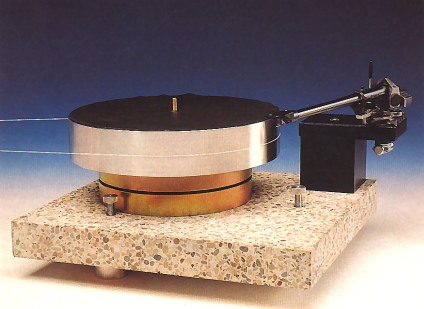 Vergegenwärtigt man sich den Mikrokosmos der Schallplatte, jene winzige
Kontaktzone,
in der sich Nadel und Vinyl begegnen, dann wird klar, wie außergewöhnlich heikel
der Vorgang ist, wie krass sich selbst kleinste Störungen auswirken können.
Das A und O außergewöhnlicher Laufwerke, das Alphabet der
Konstrukteure,
beschränkt sich auf zwei Leitsatze. Erstens: Den Abtastvorgang so weit wie möglich
gegen äußere Einflüsse isolieren. Zweitens : Dafür sorgen, daB
der Plattendreher nicht selbst zum Unruheherd wird. Wie wir wissen, führen
diesbezüglich viele Lösungswege nach Rom - Superschwerkonzepte, ausgefuchste
Federsysteme, Subchassis-Konstruktionen, Sandwichbauweisen, Luftlagerungen, exotischste
Materialien und noch vieles mehr. Logisch. daß clevere Detailideen oder gar simples
Klotzen also noch keinen guten Plattenspieler ausmachen. Wie so oft im Leben liegt der
richtige Weg in der gekonnten Komposition, im perfekt ausbalancierten Zusammenspiel aller
Bestandteile. Regeln'? Die scheint es aller Erfahrung nach nicht zu geben. Klar, der
Plattenteller soll nicht klingen, störend mitschwingen. Der Motor soll für
möglichst gleichmäßigen Antrieb sorgen. Die Tonarmbasis muß solide
und das Tellerlager so laufruhig wie nur möglich sein. Aber darüber hinaus gibt
es kein Kochrezept, Vergegenwärtigt man sich den Mikrokosmos der Schallplatte, jene winzige
Kontaktzone,
in der sich Nadel und Vinyl begegnen, dann wird klar, wie außergewöhnlich heikel
der Vorgang ist, wie krass sich selbst kleinste Störungen auswirken können.
Das A und O außergewöhnlicher Laufwerke, das Alphabet der
Konstrukteure,
beschränkt sich auf zwei Leitsatze. Erstens: Den Abtastvorgang so weit wie möglich
gegen äußere Einflüsse isolieren. Zweitens : Dafür sorgen, daB
der Plattendreher nicht selbst zum Unruheherd wird. Wie wir wissen, führen
diesbezüglich viele Lösungswege nach Rom - Superschwerkonzepte, ausgefuchste
Federsysteme, Subchassis-Konstruktionen, Sandwichbauweisen, Luftlagerungen, exotischste
Materialien und noch vieles mehr. Logisch. daß clevere Detailideen oder gar simples
Klotzen also noch keinen guten Plattenspieler ausmachen. Wie so oft im Leben liegt der
richtige Weg in der gekonnten Komposition, im perfekt ausbalancierten Zusammenspiel aller
Bestandteile. Regeln'? Die scheint es aller Erfahrung nach nicht zu geben. Klar, der
Plattenteller soll nicht klingen, störend mitschwingen. Der Motor soll für
möglichst gleichmäßigen Antrieb sorgen. Die Tonarmbasis muß solide
und das Tellerlager so laufruhig wie nur möglich sein. Aber darüber hinaus gibt
es kein Kochrezept,
das für ein gelungenes Gericht garantiert. Zudem steht der Benutzer nicht selten vor
der Aufgabe, seinen Plattenspieler zum Laufen zu bringen, den Aufbau zu
bewerkstelligen,
Justagen vorzunehmen, oder - wie auch bei der Platine Verdier - anhand feiner
Details, die
ein bißchen wie Klangregler wirken, eigene Entscheidungen zu treffen.So wie die
Platine Verdier jetzt vor uns steht, fast 50 Kilo schwer, optisch eher unscheinbar -
Glanz und Gloria finden nicht statt - wurde das Laufwerk vor 13 Jahren von dem Franzosen
Jean-Constant Verdier konzipiert. Und die HiFi-Karriere der Verdier war nie von großiem
Rummel bestimmt. Mit HiFi im üblichen Sinn, mit dem ganzen Drum und ran, hatte dieses
Laufwerk auch nie etwas zu tun; die Verdier war und ist ein Kleinserien-Objekt für
Liebhaber. Anfangs erschien im französischen InsiderMagazin L'Audiophile sogar eine Art
Bauanleitung; wer mit der Metallbearbeitung auf gutem Fuß stand, konnte selbst zur
Drehbank schreiten. !
Zwischendurch war die Verdier sogar einmal eine ganze Zeitlang nicht mehr erhältlich - dem
Monsieur Verdier, einem ruhigen, allem High-End-Voodoo abgeneigten Menschen mit einer Vorliebe
für Musik, alte Rõhrengeräte und klassische Automobile, sind
Vermarktungsstrategien offenbar ein Greuel. Statt "the best turntable in the world" ist
lediglich zu vernehmen, daß er sich bemüht habe, einen anständigen
Plattenspieler zu bauen, und darüber hinaus habe er dem nichts hinzuzufügen...
Der Plattenteller, so Verdier, müsse eben ruhig sein, und abseits von
Dämpfungsmassen, Metacrylat und kunstvollen Sandwich-Verschachtelungen ergab sich ein
sechs Zentimeter hoher Teller aus einer Alu-Legierung mit rund 16 Kilogramm Gewicht -
simples Anklopfen beweist: der Mann hat recht. Anhand des Lagers bewies der
Franzose,
daß geniale Lösungen auch immer einfache Lösungen sind; der Teller
schwebt horizontal reibungslos auf einem Magnetfeld, das von zwei großen, gegenpoligen
Ringmagneten erzeugt wird. Zwischen den Dauermagneten, übrigens eine Anleihe aus dem
Lautsprecherbau, verbleibt ein etwa funf Millimeter großer Luftspalt, die Magnete
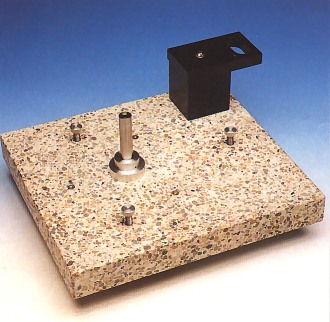 selbst sitzen jeweils in einer abschirmenden, flachen Glocke aus Metallguß,
die - auf unseren Fotos zu sehen - goldfarben oberflächenbehandelt ist. Zudem sind
durch den dicken Plattenteller magnetische Einflüsse auf den Tonabnehmer
ausgeschlossen.
Die massive Lagerbüchse ist in den Teller eingepresst, unter der Mittelspindel befmdet
sich ein kleines Ölreservoir für die Lagerung. Geölt wird über eine winzige
Verschlußschraube per Spritze. Die Achse selbst ist mit fast zwei Zentimetern Durchmesser
extrem massiv - übliche Laufwerkslager sehen im Vergleich aus, als kämen sie aus dem
Spielzeugladen. Als Chassis dient eine kleines Transportproblem aus gegossenem
Kunststein;
die Befestigung für die Laufwerksachse und die quaderförmige Aluminium-Tonarmbasis
erfolgt über riesige Unterlegscheiben und Schrauben, für die der HiFi-Fan statt dem
gewohnten Uhrmacher-Werkzeug den ganz großien Schraubenschlüssel bemühen
darf.
Ach ja: Das Lageröl läuft im laufe der Zeit im Lager nach unten durch und kommt an
der zentralen Achsschraube unter dem Chassis wieder zum Vorschein - das ist so
be- absichtigt
und der Platine-Verdier-Besitzer stellt flugs ein Ölwännchen unter; der "permanente"
ÖIwechsel verhindert, daß verbrauchtes Ölschädigend im Lager
verbleibt.
Die schon erwahnte einzig richtige Ölsorte ist auch bei den Verdier-Besitzern ein
Dauerthema: dünnflüssig oder dickflüsig? Speziell oder ganz normal, aus Mutters
Nähmaschine? Monsieur Verdier schweigt. Also halten wir uns an den Rat des Vertriebs -
man gibt eine dünnflüssige Ölsorte dazu, in einer nadellosen
Plastikspritze,
für die in der Apotheke die größte Injektionsnadel zu besorgen
ist.
Ein treuherziger Blick und das Vorzeigen der ölgefüllten Spritze - und der
Wunsch nach der größtmöglichen Kanüle - erleichtern die 30-Pfennig-Aktion.
Ach ja - synthetische Dauerschmierstoffe in Pasten- oder Gelform sind Gift für das
Lager.
Die Verdier steht auf drei Füssen, die das Laufwerk endgültig zu einem Mischkonzept
aus Masse- und Federprinzip machen: In drei aus dem Kunststein ausgesparten runden Kammern
sitzen konische Spiralfedern, die, worauf Jean-Constant Verdier Wert legt, im normalen
Zustand nicht komprimiert werden. Nach unten sind die Dämpferkammern über dicke
Gummiplatten luftdicht abgeschlossen. zum Druckausgleich dienen Bohrungen in den
Höhenjustage-Schrauben, die aus dem Chassis herausragen. Trotz einiger vptischer
Unterschiede zu den Verdiers der ersten Stunde hat sich das Federsy stem nicht grundlegend
geändert; es ist übrigens nicht schwingend, sondern .,hart" ausgelegt: Man mu schon
relativ selbst sitzen jeweils in einer abschirmenden, flachen Glocke aus Metallguß,
die - auf unseren Fotos zu sehen - goldfarben oberflächenbehandelt ist. Zudem sind
durch den dicken Plattenteller magnetische Einflüsse auf den Tonabnehmer
ausgeschlossen.
Die massive Lagerbüchse ist in den Teller eingepresst, unter der Mittelspindel befmdet
sich ein kleines Ölreservoir für die Lagerung. Geölt wird über eine winzige
Verschlußschraube per Spritze. Die Achse selbst ist mit fast zwei Zentimetern Durchmesser
extrem massiv - übliche Laufwerkslager sehen im Vergleich aus, als kämen sie aus dem
Spielzeugladen. Als Chassis dient eine kleines Transportproblem aus gegossenem
Kunststein;
die Befestigung für die Laufwerksachse und die quaderförmige Aluminium-Tonarmbasis
erfolgt über riesige Unterlegscheiben und Schrauben, für die der HiFi-Fan statt dem
gewohnten Uhrmacher-Werkzeug den ganz großien Schraubenschlüssel bemühen
darf.
Ach ja: Das Lageröl läuft im laufe der Zeit im Lager nach unten durch und kommt an
der zentralen Achsschraube unter dem Chassis wieder zum Vorschein - das ist so
be- absichtigt
und der Platine-Verdier-Besitzer stellt flugs ein Ölwännchen unter; der "permanente"
ÖIwechsel verhindert, daß verbrauchtes Ölschädigend im Lager
verbleibt.
Die schon erwahnte einzig richtige Ölsorte ist auch bei den Verdier-Besitzern ein
Dauerthema: dünnflüssig oder dickflüsig? Speziell oder ganz normal, aus Mutters
Nähmaschine? Monsieur Verdier schweigt. Also halten wir uns an den Rat des Vertriebs -
man gibt eine dünnflüssige Ölsorte dazu, in einer nadellosen
Plastikspritze,
für die in der Apotheke die größte Injektionsnadel zu besorgen
ist.
Ein treuherziger Blick und das Vorzeigen der ölgefüllten Spritze - und der
Wunsch nach der größtmöglichen Kanüle - erleichtern die 30-Pfennig-Aktion.
Ach ja - synthetische Dauerschmierstoffe in Pasten- oder Gelform sind Gift für das
Lager.
Die Verdier steht auf drei Füssen, die das Laufwerk endgültig zu einem Mischkonzept
aus Masse- und Federprinzip machen: In drei aus dem Kunststein ausgesparten runden Kammern
sitzen konische Spiralfedern, die, worauf Jean-Constant Verdier Wert legt, im normalen
Zustand nicht komprimiert werden. Nach unten sind die Dämpferkammern über dicke
Gummiplatten luftdicht abgeschlossen. zum Druckausgleich dienen Bohrungen in den
Höhenjustage-Schrauben, die aus dem Chassis herausragen. Trotz einiger vptischer
Unterschiede zu den Verdiers der ersten Stunde hat sich das Federsy stem nicht grundlegend
geändert; es ist übrigens nicht schwingend, sondern .,hart" ausgelegt: Man mu schon
relativ

kräftig auf das Chassis drücken, um die Federn zum Nachgeben zu
bewegen.
Der Antriebsmotor wurde komplett ausgelagert und kann -jetzt kommen wir zu den jeweiligen
Vorlieben der Verdier-Besitzer- im Extremfall zwei Meter weiter oder ganz dicht am Laufwerk
stehen. Ermöglich wird dies durch den String-Antrieb:
Ein dunner Antriebsfaden lauft vom Motorpulley über den Außenrand des
Tellers;
der String-An-trieb dürfte einigen HiFi-Fans noch von den japanischen Micro-Laufwerken her
bekannt sein.
Der Antriebsmotor- ein kleiner, aber drehmomentstarker Gleichstrommotor - residiert in einem
schweren Extragehäuse, das zur Verbesserung der Standfestigkeit auf dicken Stahlplatten
ruht. Ein kleiner Umschalter an dem eher rustikal wirkenden Antrieb erlaubt die Wahl zwischen
33er- und 45er- Geschwindigkeit; zwei Regler sind für die Feineinstellung der Drehzahlen
zuständig, die per Stroboskopscheibe bei aufgelegter Schallplatte und abgesenktem Tonarm
zu justieren sind. Dem Motor vorgeschaltet ist ein hochstabilisiertes Netzteil, das die
Gleichspannung bereitstellt. Der String selbst ist Gegenstand highfideler
Experimentierfreude:
Nylon, simple Nähseide, dicke Knopflochseide, dehnbar oder nicht dehnbar, plus Exotika
aus der Faserchemie-Küche. Fast alles ist möglich, und alle Varianten klingen
übrigens tendenziell ein wenig anders; eine weitere Variable ist die Spannung des Strings,
der in der Mitte des Tellers laufen sollte: Keinesfalls zu fest, lautet die Devise, und
wunderbarerweise kann man stets beobachten, wie sich der Knoten des Antriebsfadens bei
jedem Durchgang am Teller nach außen legt. Bei unseren Experimenten haben wir den Motor
übrigens auf drei Sorbothane Füsse gestellt, die der HiFi-Zubehörhandel
bereithält. Die extrem weichen Sorbothane-Rundlinge isolieren den Motor bestens und halten
das Antriebsset durch ihren Selbstklebe-Effekt unverrückbar fest. Es bietet sich
natürlich an, den Motor völlig getrennt vom Laufwerk - etwa auf einem Extratisch -
aufzustellen; Extremisten sei aber gesagt, daß mehr als zwei Meter Distanz zum Laufwerk
wegen der Lauferei völlig unpraktisch sind... Die Hochlaufzeit des schweren Tellers ist
von der Spannung des Fadens abhängig, einige stolze Verdier-Betreiber versicherten uns
sogar glaubhaft, den Motor praktisch niemals auszuschalten, und - "er laüft schon seit
Jahren" - daß das Auflegen und Abnehmen der Platten bei drehendem Teller überhaupt
kein Problem sei! In der Praxis ist die Hochlaufzeit von einigen Sekunden durchaus im Rahmen
des Erträglichen. Wer neben einer Verdier einen Stapel l2-Volt-Bleiakkus
ortet, ist einem
Stromversorgungsfreak begegnet: Dem - wie man hört - klanglich nochmals gewinnbringenden
Batteriebetrieb des Motors steht außer versierter Bastelei nichts im Wege...
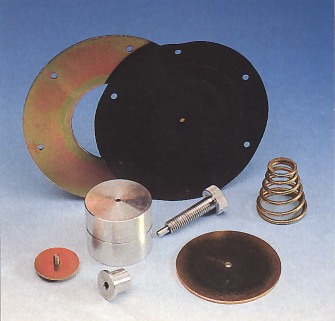 Wer sich über die Qualitäten des Verdier-Lagers informieren will, gibt dem -
nach längerer Zeit endgültig eingelaufenen - Teller bei abgenommenem String Wer sich über die Qualitäten des Verdier-Lagers informieren will, gibt dem -
nach längerer Zeit endgültig eingelaufenen - Teller bei abgenommenem String
einen kräftigen Schubs und guckt dann bei zwei Tassen Kaffee zu, wie sich die Sache
weiterdreht. Dabei läßt sich auch gut über das Plattenmatten-Problem
nachdenken;
der Vertrieb liefert die Verdier mit einer einfachen dünnen Ledermatte, auf die wir nach
einigen Versuchen stets zurückkamen. Diverse "Matten", wie man die kunstvoll gemachten und
entsprechend teuren Dinger kaum mehr nennen kann, wurden probiert, und allenfalls einige
Metacrylat-Versionen waren imstande, den Klang positivzu beeinflussen - Unterlagen aus einem
LP-ähnlichen Material sind erfahrungsgemäß am besten.Doch diesbezüglich
herrscht Meinungsfreiheit, ebenso wie bei Plattenklemmen, Ikea-Tischen,
Ziegelstein-Unterbauten, Betonfundamenten, Stahlrohr-Gestellen und mit Spikes
versehenen, mitunter unbezahlbaren
Supersound-Mk-IV-Klangförderern. Letztere sind angesichts der schieren Verdier-Masse
allerdings auf Tragfähigkeit zu prüfen. Der Vollständigkeit halber soll noch
erwähnt werden, daß Laufwerks- und Motoreinheit selbstverständlich präzise
mit der Wasserwaage einzurichten sind. Im Gegensatz zu einigen anderen "Laufwerken" ist die
Verdier mechanisch präzise gebaut: Steinzarge und Telleroberfläche liegen zum Beispiel
exakt in horizontal paralellen Ebenen - ein Umstand, den sich die Konstrukteure einiger anderer
teurer Plattendreher einmal zu Herzen nehmen sollten. Die zweiteilige Tonarmbasis ist durch
einen entsprechend ausgelegten Montageschlitz im Steinchassis variabel
montierbar, was den
Einsatz "langer" und "kurzer" Tonarme ermöglicht. Das Unterteil der
Basis, ein schwerer Vierkant-Alublock, wird dann mit einem Schraubbolzen und riesigen Unterlegscheiben
festgezogen;
das Oberteil ist via Inbusschraube aufgetlanscht.
Nun, was erwartet jene, die sich das Zehntausend-Mark-Vergnügen Platine Verdier leisten
wollen - und können? Zunächst einmal: Erstaunen. Es ist nur schwer in Worte zu
fassen,
wie groß der Abstand zwischen relativ normalen Plattendrehern und einem Superlaufwerk
wie der Verdier noch ist. Der Standpunkt, daß die Qualität des Laufwerks der
entscheidende, ausschlaggebende Punkt in Sachen Analogwiedergabe ist, hat sich ja in den
letzten Jahren - leider viel zu spät - zu Recht durchgesetzt. Wer schon einmal einen
Goldmund Reference, einen Forsell oder einen Versa Dynamics gehört hat, wird
verstehen,
was gemeint ist. Mit welchen Abtastern oder Tonarmen gearbeitet wird, ist dabei fast von
sekundärer Natur; all jenen, die immer noch behaupten, die Scheibe müsse sich halt
drehen und das Geld solle besser in den Tonabnehmer investiert werden, beweist die Verdier das
Gegenteil. Aber, keine Frage, aus hochkarätigen Zutaten holt die Platine Verdier das
Machbare heraus. Dabei tritt das Rillengerausch bei leisen Passagen, ein altbekannter
Störfaktor, seltsamerweise fast ganz in den Hintergrund, wie wenn hierfür ein Filter
zwischengeschaltet wäre. Die Baßwiedergabe dehnt sich ungeheuer in der Tiefe
aus,
wirkt farbiger, kräftiger und
schneller. Und erst jetzt hört man, daß der musikalisch so wichtige
Grundtonbereich bei weniger guten Laufwerken fast wie unterbelichtet kommt, Solidität
vermissen läßt und auch den höheren Lagen Substanz und Fülle
raubt.
Was die Verdier hier realisiert, ist aber nur die Spitze des Eisbergs - die wahre Qualität
des Laufwerks zeigt sich nicht an der noch beschreibbaren Klang-Oberflache, sondern auf der
Erlebnisebene: In der guten alten LP versteckt sich noch weit mehr, als man
glaubt, eine neue
Qualität, die sich dort manifestiert, wo die Konserve nicht mehr konsumiert, sondern
aufgenommen, verstanden wird.
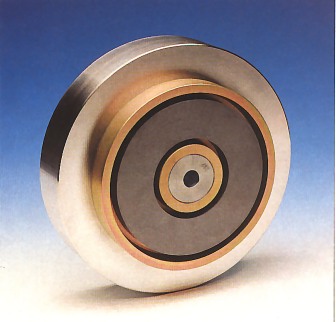 Ist es die sprichwörtliche
Ruhe, aus der heraus die Verdier zu reproduzieren versteht?
Oder liegt das Geheimnis in der dynamischen Akzentuierung, in der Hörbarkeit feinster
Details, die vorher in einem Gerauschteppich untergingen? Ist es die unglaubliche
Homogenität, zu der der Klang jetzt verschmilzt, die bruchlose, klare
Unmittelbarkeit,
mit der auch große Klangkörper völlig selbstverständlich dargestellt
werden? Die Stille, so wurde einmal formuliert, ist stärker als der Sturm. Und genau hier
dürfte ein Teil der Wahrheit liegen - die Unterscheidung zwischen laut und
leise. zwischen
dem explosiven Ausbruch und der zurückhaltenden, ja verhaltenen Aussage gelingt der Verdier
auf einem höheren Niveau, das den Zuhörer ganz anders packt, miteinbezieht und
deutlich mehr gefangennimmt. Und vor diesem Hintergrund müssen auch die möglichen
Klangveränderungen gesehen werden, die man der Verdier anerziehen kann: Eine andere
Plattenmatte, ein anderer Antriebsriemen, eine neue Plattenklemme - und schon verändert
sich zum Beispiel der Baß; vorher schwingend, vibrierend, farbig - dann hart. zwar
akzentuierter, aber weniger packend, weniger musikalisch, Timing und Rythmus gehen etwas
verloren. Und im Hintergrund taucht schon schemenhaft das Gespenst der
Sterilitat, der
oberflächlichen, gedankenlosen Verbesserung, der - es muß einfach gesagt werden -
digitalen Emotionslosigkeit auf. Die beschriebene feine, durchhörbare Reaktion auf
vermeintliche Kleinigkeiten macht das Laufwerk aber noch nicht zu einer klanglichen
Mimose,
mit der schwer umzugehen ist; das Niveau, auf dem die Platine Verdier steht, bleibt stets
erhalten; trimmen, ausgleichen -ja, auch den eigenen Geschmack einfließen lassen -
ist legitim und tut der Sache keinen Abbruch. Besagte Sache wiederum ist zu Recht eine
Legende,
keine HiFi-Legende, sondern eine musikalische Legende, die den schwarzen Tonkonserven zu einer
neuen, nein, schon immer vorhandenen, aber nur so schwer zu realisierenden Qualität
verhilft. Spätestens jetzt dürfte Ihr Einwand kommen: Zu enthusiastisch
beschriehen.
und überhaupt - mit welchen Tonarm-/Systemkombis wurde gehört'' Gemach.
Es geht nicht um Referenzen, nicht um die Analog-Sensation des Monats. Das Verdier-Laufwerk hat
gut ein Dutzend Jährchen auf dem Buckel. Es gab auch ein paar im großen und ganzen
vernachlässigbare Änderungen, eher kosmetischer Natur, ohne das Konzept zu
beeinträchtigen. Während dieser Zeit kamen und gingen viele Tonarme und
Systeme, Sensationen, Flops und Dauerbrenner - aber die Verdier blieb. Dafür gibt es Gründe.
Mußes Gründe geben. Und die sind nicht kurzlebiger Natur. Wir jedenfalls heften
Jean-Constant Verdier drei STEREO-Sternchen ans Revers. Wohl wissend. daß er sich nichts
aus Auszeichnungen macht. Sie dürfen die Sternchen auch vergessen. Aber Sie könnten
uns fragen. ob uns dieses Laufwerk wirklich so sehr begeistert hat. Die Antwort : Ja ! Ist es die sprichwörtliche
Ruhe, aus der heraus die Verdier zu reproduzieren versteht?
Oder liegt das Geheimnis in der dynamischen Akzentuierung, in der Hörbarkeit feinster
Details, die vorher in einem Gerauschteppich untergingen? Ist es die unglaubliche
Homogenität, zu der der Klang jetzt verschmilzt, die bruchlose, klare
Unmittelbarkeit,
mit der auch große Klangkörper völlig selbstverständlich dargestellt
werden? Die Stille, so wurde einmal formuliert, ist stärker als der Sturm. Und genau hier
dürfte ein Teil der Wahrheit liegen - die Unterscheidung zwischen laut und
leise. zwischen
dem explosiven Ausbruch und der zurückhaltenden, ja verhaltenen Aussage gelingt der Verdier
auf einem höheren Niveau, das den Zuhörer ganz anders packt, miteinbezieht und
deutlich mehr gefangennimmt. Und vor diesem Hintergrund müssen auch die möglichen
Klangveränderungen gesehen werden, die man der Verdier anerziehen kann: Eine andere
Plattenmatte, ein anderer Antriebsriemen, eine neue Plattenklemme - und schon verändert
sich zum Beispiel der Baß; vorher schwingend, vibrierend, farbig - dann hart. zwar
akzentuierter, aber weniger packend, weniger musikalisch, Timing und Rythmus gehen etwas
verloren. Und im Hintergrund taucht schon schemenhaft das Gespenst der
Sterilitat, der
oberflächlichen, gedankenlosen Verbesserung, der - es muß einfach gesagt werden -
digitalen Emotionslosigkeit auf. Die beschriebene feine, durchhörbare Reaktion auf
vermeintliche Kleinigkeiten macht das Laufwerk aber noch nicht zu einer klanglichen
Mimose,
mit der schwer umzugehen ist; das Niveau, auf dem die Platine Verdier steht, bleibt stets
erhalten; trimmen, ausgleichen -ja, auch den eigenen Geschmack einfließen lassen -
ist legitim und tut der Sache keinen Abbruch. Besagte Sache wiederum ist zu Recht eine
Legende,
keine HiFi-Legende, sondern eine musikalische Legende, die den schwarzen Tonkonserven zu einer
neuen, nein, schon immer vorhandenen, aber nur so schwer zu realisierenden Qualität
verhilft. Spätestens jetzt dürfte Ihr Einwand kommen: Zu enthusiastisch
beschriehen.
und überhaupt - mit welchen Tonarm-/Systemkombis wurde gehört'' Gemach.
Es geht nicht um Referenzen, nicht um die Analog-Sensation des Monats. Das Verdier-Laufwerk hat
gut ein Dutzend Jährchen auf dem Buckel. Es gab auch ein paar im großen und ganzen
vernachlässigbare Änderungen, eher kosmetischer Natur, ohne das Konzept zu
beeinträchtigen. Während dieser Zeit kamen und gingen viele Tonarme und
Systeme, Sensationen, Flops und Dauerbrenner - aber die Verdier blieb. Dafür gibt es Gründe.
Mußes Gründe geben. Und die sind nicht kurzlebiger Natur. Wir jedenfalls heften
Jean-Constant Verdier drei STEREO-Sternchen ans Revers. Wohl wissend. daß er sich nichts
aus Auszeichnungen macht. Sie dürfen die Sternchen auch vergessen. Aber Sie könnten
uns fragen. ob uns dieses Laufwerk wirklich so sehr begeistert hat. Die Antwort : Ja !
|


![]()
![]()
![]()